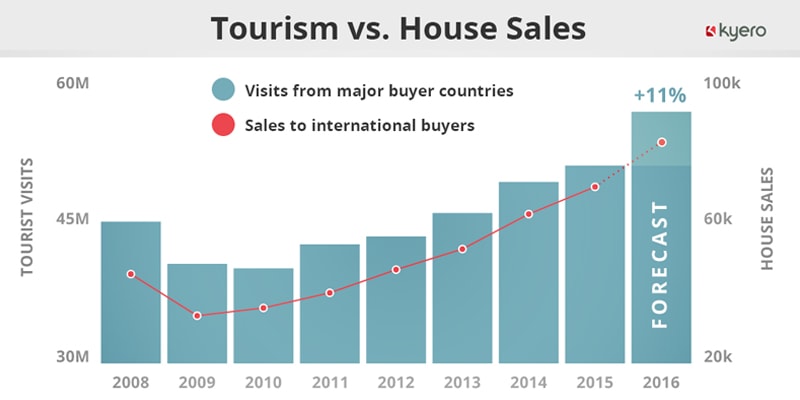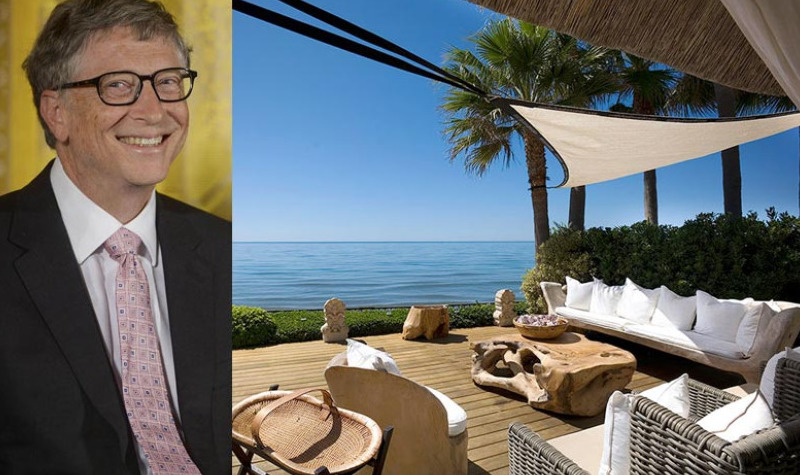Spanish property investment in 2013 was seen as something of a busted flush, but Gates is not your average investor – he saw the long game, identified the forthcoming recovery and is now reaping the rewards. Remember to think like Bill Gates when investing in Spanish property 2017!
A slew of billionaires are putting their money into Spanish property. Why?
In 2013 the world’s richest man invested €113.5m into Spanish property via FCC, a Barcelona-based property company. In 2014 George Soros joined him, and in 2016 Carlos Slim (the world’s 4th richest man) made his own big bet on a Spanish property recovery.
None of them cited house prices or construction statistics among their main reasons to invest. They talked about wider economics – something often ignored in the property press.
Billionaires look beyond property data
Traditional statistics such as house prices and sales volumes tell us where we are, but they lack the context required to make Bill Gates-style predictions. To bet on the future, real estate professionals (and property portals!) need to look at the market more creatively.
For example, tourism data isn’t a big part of property headlines but does that mean we should ignore it?
We checked to see if tourism data has any value as a sideways indicator:

Spanish tourism vs. House sales
Sources: Frontur / INE.es / Fomento.gob.es
It’s a potentially exciting signal.
Frontur reported an 11.4% rise in tourist arrivals in January/February 2016 from Spain’s main sources of property investment – UK, Germany, France, Italy, Ireland, Belgium and the Nordic countries.
Three other (simple!) market signals
Watching the market like a billionaire doesn’t require a deep understanding of economics if we keep in mind some very simple questions:
Are foreigners coming to Spain? (see above)
Can they afford to buy?
Is Spanish property a good investment?
Here are some other numbers that are easy to monitor and very insightful:
1. GDP Growth
Gross Domestic Product offers a quick way to know if Spain’s international investors are in the mood to spend.
High growth generally means a base of happy buyers and we can get a very quick skim of national economies via World Bank GDP Growth Tables. For context, Spain and Germany are growing slowly but steadily at 1.4% and 1.6% respectively. The UK has pulled ahead of the Eurozone with 2.9% growth, helping to explain a recent surge in British enquiries.
Meanwhile Russia is growing at a very wobbly 0.6% – Russian buyers are likely to get harder to find.
2. Exchange rates vs. HPI
Currency makes an obvious difference to overseas buyers and a weakening Euro can drive sales by making houses cheap. British buyers now have 25% more purchasing power in 2016 than they did in 2008 when the Pound plummeted against the Euro.
However the effect can be magnified even further by factoring in the House Price Index.
Example: Imagine a British buyer fell in love with a house costing €200,000 in 2008 – a cost to them of £196,000. HPI says the same house now costs 31% less and at today’s stronger exchange rate, that same house would now cost our buyer £109,000 – saving them £87,000 (43%).
Maths is making Spain good value. Our buyer is now buying a bigger house, or buying two houses and probably persuading his poorer friend to buy the little apartment next door.
3. Rental Values
Some international buyers relocate to Spain, but many don’t. These investors are looking for a solid return on their investment either via rising property values, or via rental income.
Rising rents increase yields and reassure international buyers. The easiest way to track them is via the housing component of CPI (cost of living index).
This market can be trickier to predict, but rising rents – tied to a stronger domestic economy in Spain – are being seen across many of the most popular regions, further strengthening the appeal of Spanish property.
Even if you are not Bill Gates, or have never been close to being a billionaire or savvy investors, this data cannot be ignored: for a sure thing, it pays to invest in Spanish property.




